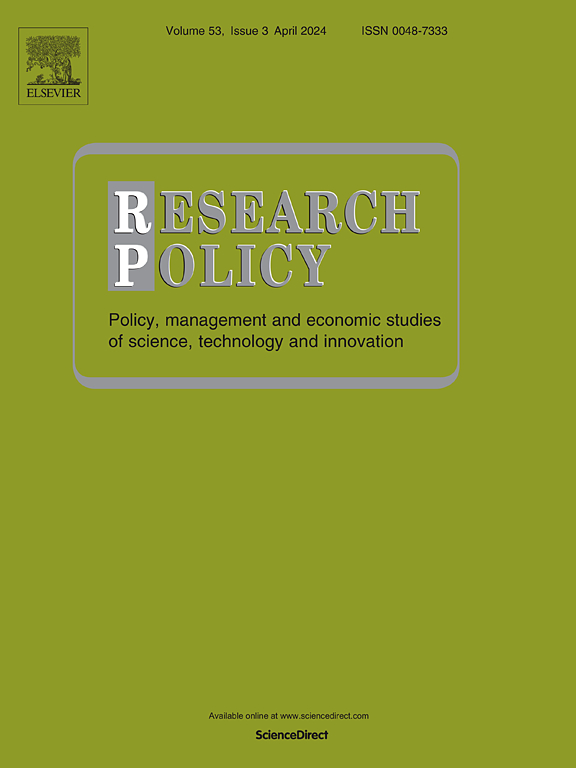Inter-system linkage formation in multi-system transitions: Incumbents, asymmetries and learning cycles
IF 8
1区 管理学
Q1 MANAGEMENT
引用次数: 0
Abstract
This paper analyses how incumbent actors with established positions in various sectors and systems engage in the formation of inter-system linkages to combine different systems in new ways. We refer to such recombination of systems as a multi-system transition. Grounded in evolutionary economics, the paper introduces a recursive model with interrelated learning cycles that account for both transitions in individual systems and interactions to establish new linkages between systems. A case analysis of the ongoing electrification of goods transportation in Sweden – a multi-system transition that combines electricity and goods transportation in new ways – illustrates how interactions across systems often are asymmetric, with some systems undergoing more substantial changes than others. This asymmetry helps explain why incumbent actors from different systems and sectors favor different kinds of inter-system linkages. Asymmetries across systems reveal a more complex sequentiality of a multi-system transition compared to a single-system transition, with different systems situated in different transition phases. This necessitates mixes of supporting policies tailored to stimulate a variety of transition phases. By introducing a model that highlights actor-system coevolution, the paper provides insights into the possibilities to engage incumbent actors from different systems and sectors to drive multi-system transitions.
多系统转型中的系统间联系形成:在位者、不对称和学习周期
本文分析了在不同部门和系统中具有既定地位的现任行动者如何参与形成系统间联系,以新的方式将不同的系统结合起来。我们把这种系统的重组称为多系统过渡。本文以进化经济学为基础,介绍了一个具有相互关联的学习周期的递归模型,该模型既考虑了个体系统的过渡,也考虑了系统之间建立新联系的相互作用。瑞典正在进行的货物运输电气化的案例分析-以新的方式结合电力和货物运输的多系统过渡-说明了系统之间的相互作用通常是不对称的,一些系统经历的变化比其他系统更大。这种不对称有助于解释为什么来自不同系统和部门的现任行为者倾向于不同类型的系统间联系。不同系统处于不同的过渡阶段,不同系统之间的不对称揭示了多系统过渡比单系统过渡更复杂的顺序性。这就需要采取多种支持政策,以刺激不同的过渡阶段。通过引入一个强调行为者-系统共同进化的模型,本文提供了让来自不同系统和部门的现任行为者参与推动多系统转型的可能性的见解。
本文章由计算机程序翻译,如有差异,请以英文原文为准。
求助全文
约1分钟内获得全文
求助全文
来源期刊

Research Policy
MANAGEMENT-
CiteScore
12.80
自引率
6.90%
发文量
182
期刊介绍:
Research Policy (RP) articles explore the interaction between innovation, technology, or research, and economic, social, political, and organizational processes, both empirically and theoretically. All RP papers are expected to provide insights with implications for policy or management.
Research Policy (RP) is a multidisciplinary journal focused on analyzing, understanding, and effectively addressing the challenges posed by innovation, technology, R&D, and science. This includes activities related to knowledge creation, diffusion, acquisition, and exploitation in the form of new or improved products, processes, or services, across economic, policy, management, organizational, and environmental dimensions.
 求助内容:
求助内容: 应助结果提醒方式:
应助结果提醒方式:


